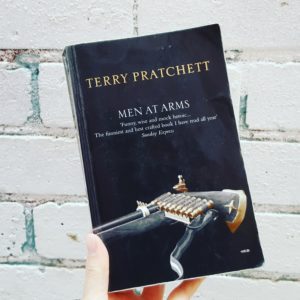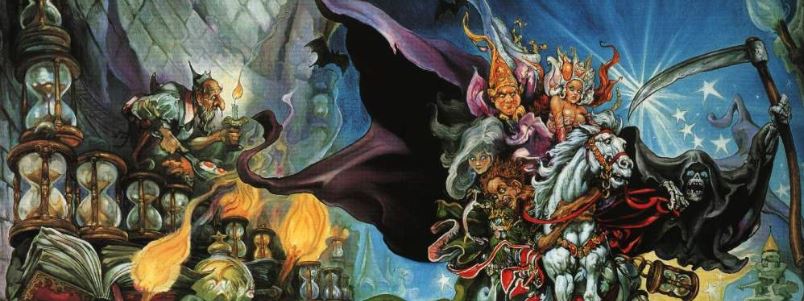#Pratchat2 – Murdering a Curry
In our second episode, writer and editor Stephanie Convery joins us as we discuss the runner-up in our poll for which book to read first – Terry Pratchett’s Mort! Published 30 years ago, it’s the fourth Discworld novel, and the first to put Death in a starring role.
Mort (short for Mortimer), a daydreaming farmer’s son, is offered an apprenticeship by Death himself. Travelling outside of space and time to Death’s home, he finds things aren’t what he expects: Death has an elderly manservant, an adopted daughter, and an unusual interest in fly fishing. Mort, left to do the job alone, tries to defy fate in a very human (and teenage) moment – but can he possibly succeed? And why does an immortal anthropomorphic personification need an apprentice, anyway?
Mort is often cited (including by us) as the first book in the series that feels like the Discworld we know and love, so if you’re joining us for the first time this episode, this is a great place to start. (And don’t worry: we do later go back and read the first three books, The Colour of Magic, The Light Fantastic and Equal Rites. See our Books page for a list of episodes in publication order.)
Podcast: Play in new window | Download (Duration: 1:33:48 — 86.6MB)
Guest Stephanie Convery is a writer and author, and at the time of this episode deputy culture editor of Guardian Australia. She is currently their dedicated inequality reporter. Stephanie’s first book, After the Count: The Death of Davey Browne, was published in March 2020 by Penguin Books. You can follow Stephanie on Twitter at @gingerandhoney, and find her work at Guardian Australia.
You can find the full show notes and errata for this episode on our web site.
Want to help us get to the end of our six(ish) year mission and read every Pratchett book – and more? You can support us with a tip, or a subscription for as little as $2 a month, and that’s cuttin’ our own throats! See our Support Us page for details.


